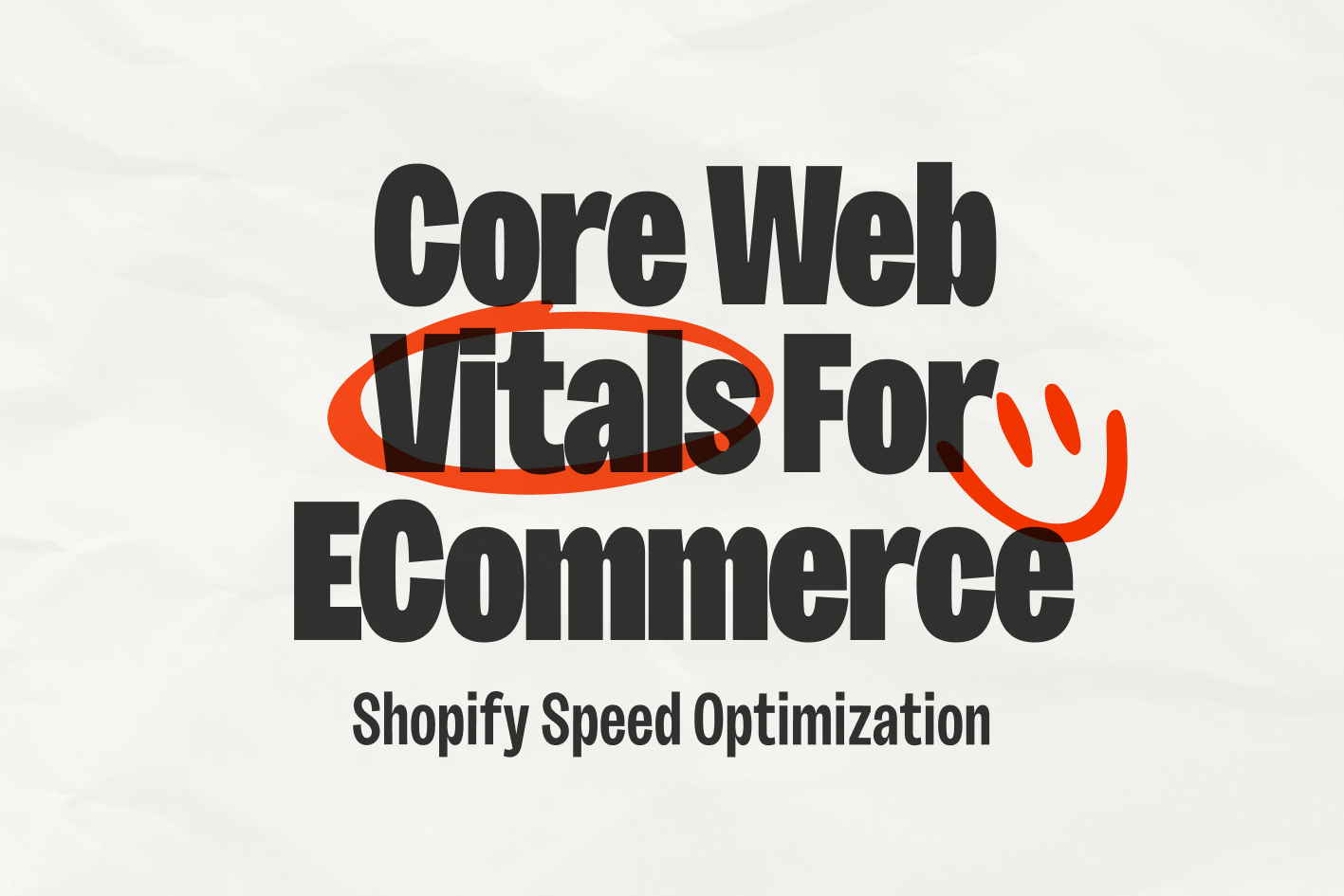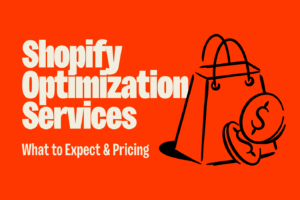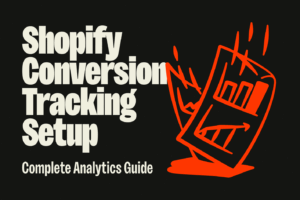Your Shopify store’s loading speed directly impacts your bottom line. With every second of delay potentially costing you 7% in conversions, optimizing for Core Web Vitals isn’t just about better rankings—it’s about maximizing revenue. Recent 2025 data shows that 82% of mobile shoppers abandon purchases on slow-loading sites, making speed optimization critical for eCommerce success.
Table of Contents
The Critical Impact of Speed on Shopify Stores
Store speed fundamentally shapes customer experience and business outcomes. Current industry analysis reveals that the average Shopify store loads in 3.2 seconds, yet optimal performance requires sub-2.5 second load times for maximum conversion potential.
Shopify Speed Statistics and Benchmarks
Performance metrics from 2025 eCommerce studies demonstrate clear correlations between speed and success:
- Average Shopify load time: 3.2 seconds (industry benchmark)
- Optimal load time: Under 2.5 seconds for maximum conversions
- Mobile performance gap: 40% slower than desktop on average
- Bounce rate increase: 32% for every additional second of load time
- Revenue impact: $2.6 billion lost annually due to slow mobile sites
The data reveals that stores achieving under 2-second load times see 35% higher conversion rates compared to stores loading in 4+ seconds. Mobile optimization proves even more critical, with 67% of mobile users abandoning purchases after experiencing slow checkout processes.
Cost of Slow Shopify Stores
Speed directly correlates with profitability across multiple business metrics:
Revenue Loss Analysis:
- 1-second delay = 7% reduction in conversions
- 3-second load time = 40% user abandonment
- Poor mobile speed = 53% mobile session abandonment
SEO and Ranking Impact:
- Core Web Vitals now primary ranking factors
- Slow sites lose 15-20% organic visibility
- Page experience signals affect search performance
- Mobile-first indexing prioritizes fast mobile experiences
Competitive Disadvantage: Fast competitors capture customers from slow stores, with 79% of users less likely to return after poor speed experiences.
Core Web Vitals Optimization for Shopify

Google’s Core Web Vitals measure real user experience through three essential metrics that directly impact both rankings and conversions.
Largest Contentful Paint (LCP) Optimization
LCP measures loading performance, with optimal scores under 2.5 seconds. For Shopify stores, this primarily involves above-the-fold content optimization.
Image Optimization Strategies:
- Convert product images to WebP format (30% smaller file sizes)
- Implement responsive images with srcset attributes
- Prioritize hero images and above-the-fold visuals
- Use lazy loading for below-the-fold content only
Above-the-Fold Content Prioritization:
- Minimize HTML, CSS, and JavaScript in critical rendering path
- Inline critical CSS for immediate visual rendering
- Defer non-essential JavaScript execution
- Optimize font loading with display: swap declarations
Server Response Time Improvements: Shopify’s CDN provides global optimization, but additional improvements include:
- Minimize app overhead during initial page load
- Optimize Liquid template complexity
- Reduce unnecessary API calls in theme code
- Implement efficient product data fetching
First Input Delay (FID) Improvement
FID measures interactivity, with target scores under 100 milliseconds. This metric proves crucial for eCommerce functionality like add-to-cart buttons and checkout processes.
JavaScript Execution Optimization:
- Break up long-running JavaScript tasks
- Use web workers for heavy computations
- Implement code splitting for large scripts
- Prioritize critical interactive elements
Third-Party Script Management:
- Audit all marketing pixels and tracking codes
- Load non-critical scripts asynchronously
- Consolidate multiple tracking implementations
- Use Google Tag Manager for script optimization
Main Thread Blocking Reduction:
- Minimize main thread work during page load
- Defer non-critical JavaScript execution
- Use requestIdleCallback for background tasks
- Optimize event listeners and handlers
Cumulative Layout Shift (CLS) Prevention
CLS measures visual stability, with optimal scores under 0.1. Layout shifts particularly affect eCommerce trust and usability.
Image and Video Dimension Setting:
- Specify width and height attributes for all media
- Use CSS aspect-ratio properties for responsive images
- Reserve space for dynamically loaded content
- Optimize product image galleries for stability
Dynamic Content Loading Optimization:
- Reserve space for promotional banners
- Pre-allocate space for review widgets
- Optimize cart drawer and modal implementations
- Ensure consistent header and navigation sizing
Font Loading Strategy Improvement:
- Use font-display: swap for custom fonts
- Preload critical font files
- Optimize web font loading order
- Minimize font variation usage
Shopify Theme Speed Optimization

Theme selection and optimization significantly impact overall store performance, with some themes performing 300% faster than others.
Theme Selection for Performance
Fast-Loading Theme Identification: Leading performance-focused themes for 2025:
- Dawn (Shopify’s reference theme): 2.1s average load time
- Impulse: 2.4s average with optimized configurations
- Turbo: 2.3s average with built-in speed features
- Ella: 2.6s average with proper optimization
Theme Performance Comparison Criteria:
- Core Web Vitals scores out of the box
- Code quality and optimization level
- Built-in performance features
- Mobile optimization quality
- App compatibility and speed impact
Custom vs Purchased Theme Speed: Custom themes allow for maximum optimization but require expertise. Purchased themes offer faster implementation but may include unnecessary features impacting speed.
Theme Code Optimization
Liquid Template Optimization: Shopify’s Liquid templating can create performance bottlenecks through inefficient loops and queries:
liquid
<!-- Inefficient: Multiple queries -->
{% for product in collections.featured.products %}
{% for variant in product.variants %}
{{ variant.price }}
{% endfor %}
{% endfor %}
<!-- Optimized: Single query with limits -->
{% assign featured_products = collections.featured.products | limit: 8 %}
{% for product in featured_products %}
{{ product.price_min }}
{% endfor %}Unused CSS and JavaScript Removal:
- Audit theme assets for unused code
- Remove unnecessary CSS frameworks
- Minimize JavaScript libraries
- Eliminate redundant styling rules
Critical CSS Implementation: Extract and inline CSS required for above-the-fold content rendering, deferring non-critical styles for later loading.
Theme Feature Optimization
Slider and Carousel Optimization:
- Limit hero sliders to 3-4 images maximum
- Use CSS transforms instead of JavaScript animations
- Implement lazy loading for slider content
- Consider static hero images for mobile
Animation and Transition Reduction: Minimize CSS animations and JavaScript transitions that don’t add significant value, focusing on essential user feedback elements.
Image and Media Optimization
Visual content typically accounts for 60-70% of page weight in eCommerce stores, making optimization crucial for speed improvements.
Image Compression and Format Optimization
WebP Format Implementation: WebP provides 25-30% better compression than JPEG while maintaining quality:
- Use Shopify’s automatic WebP conversion
- Implement fallback for older browsers
- Optimize WebP quality settings (80-85% optimal)
- Monitor file size reductions
Image Compression Techniques:
- Product images: 80-85% quality for main images
- Lifestyle photos: 75-80% quality acceptable
- Icons and graphics: Use SVG format when possible
- Background images: Optimize aggressively (70-75% quality)
Responsive Image Sizing: Implement proper responsive images to serve appropriate sizes:
html
<img src="product-800w.webp"
srcset="product-400w.webp 400w,
product-800w.webp 800w,
product-1200w.webp 1200w"
sizes="(max-width: 768px) 100vw, 50vw"
alt="Product name">Product Image Optimization
Product Gallery Optimization:
- Limit main product images to 6-8 maximum
- Use thumbnail lazy loading
- Implement efficient zoom functionality
- Optimize image variants for different devices
Zoom Functionality Performance: Choose lightweight zoom implementations:
- CSS-only zoom solutions when possible
- Minimize JavaScript overhead
- Use high-resolution images only when needed
- Implement progressive image loading
Shopify App Performance Impact
Apps significantly impact store speed, with each app potentially adding 0.1-0.3 seconds to load times.
App Audit and Optimization
App Performance Impact Assessment: Regular auditing reveals that stores with 10+ apps average 1.2 seconds slower load times:
- High impact apps: Live chat, pop-ups, review widgets
- Medium impact apps: Analytics, email capture, social proof
- Low impact apps: SEO tools, admin utilities
Unnecessary App Removal: Audit installed apps quarterly:
- Remove unused or redundant functionality
- Consolidate similar app functions
- Evaluate ROI vs speed impact
- Consider native Shopify alternatives
App Loading Optimization
Asynchronous App Loading: Configure apps to load after critical page content:
- Defer non-essential app scripts
- Use intersection observer for below-fold apps
- Implement conditional loading based on user behavior
- Prioritize revenue-generating app functionality
Performance-Friendly App Selection: When selecting new apps, prioritize:
- Lightweight code implementations
- Lazy loading capabilities
- Minimal script overhead
- Positive performance reviews
Technical Shopify Speed Improvements
Advanced technical optimizations can provide significant performance gains beyond basic theme and image optimization.
Shopify CDN Optimization
CDN Configuration Best Practices: Shopify’s global CDN network automatically optimizes delivery, but additional configurations help:
- Leverage browser caching headers
- Optimize cache invalidation strategies
- Use appropriate cache durations
- Monitor CDN performance metrics
Geographic Performance Optimization:
- Test site speed from target markets
- Consider additional CDN layers for specific regions
- Optimize for primary customer locations
- Monitor international performance metrics
Advanced Performance Techniques
Critical Resource Prioritization: Implement resource hints for better loading prioritization:
html
<link rel="preload" href="critical-font.woff2" as="font" type="font/woff2" crossorigin>
<link rel="preconnect" href="https://cdn.shopify.com">
<link rel="dns-prefetch" href="//google-analytics.com">Third-Party Integration Optimization:
- Consolidate tracking pixels when possible
- Use Google Tag Manager for script management
- Implement consent management for EU compliance
- Monitor third-party script performance impact
Mobile Speed Optimization Specifics
Mobile optimization requires dedicated attention, as mobile users represent 79% of eCommerce traffic in 2025.
Mobile-First Performance Strategy
Mobile Page Speed Prioritization:
- Target 2-second mobile load times
- Optimize for 3G network conditions
- Prioritize touch interaction speed
- Implement mobile-specific optimizations
Touch Interaction Optimization: Ensure immediate response to user interactions:
- Optimize button tap response times
- Minimize delay for form interactions
- Ensure smooth scrolling performance
- Implement efficient swipe gestures
Mobile Network Optimization
3G and 4G Performance Testing: Test store performance under various network conditions:
- Use Chrome DevTools network throttling
- Test with WebPageTest mobile settings
- Monitor real user mobile performance
- Optimize for slower connections
Connection-Aware Loading: Implement adaptive loading based on connection quality:
javascript
if (navigator.connection && navigator.connection.effectiveType === '3g') {
// Load optimized content for slower connections
loadLightweightVersion();
} else {
loadFullExperience();
}Speed Testing and Monitoring
Consistent monitoring ensures maintained performance as stores evolve and grow.
Performance Testing Tools
Comprehensive Testing Strategy:
- Google PageSpeed Insights: Core Web Vitals analysis
- GTmetrix: Detailed waterfall analysis
- WebPageTest: Advanced mobile testing
- Shopify’s Online Store Speed Report: Platform-specific insights
Testing Best Practices:
- Test from multiple geographic locations
- Include both desktop and mobile testing
- Test during different traffic conditions
- Monitor competitor performance benchmarks
Continuous Performance Monitoring
Real User Monitoring Setup: Implement RUM for actual user experience data:
- Track Core Web Vitals from real users
- Monitor performance across different devices
- Identify performance issues by traffic source
- Set up alerts for performance degradation
Regular Speed Audits: Conduct monthly performance reviews:
- App impact assessment
- New feature speed testing
- Competitive performance comparison
- Optimization opportunity identification
Professional Shopify Speed Services

Complex speed optimization often requires expert implementation for maximum results.
When to Hire Speed Optimization Experts
Consider professional optimization when:
- Current load times exceed 4 seconds
- Multiple speed issues require coordination
- Technical implementation exceeds in-house capabilities
- Revenue impact justifies investment
Expected Performance Improvements: Professional optimization typically achieves:
- 40-60% reduction in load times
- 20-35% improvement in conversion rates
- Significant Core Web Vitals improvements
- Enhanced mobile performance
How Glued Optimizes Shopify Speed: Our comprehensive approach includes technical auditing, theme optimization, app performance analysis, and ongoing monitoring to ensure sustained speed improvements that drive measurable revenue growth.
WordPress Optimization Details:
URL: insights.getglued.co/shopify/shopify-speed-optimization/ Meta Title: Shopify Speed Optimization: Core Web Vitals for eCommerce | Glued Meta Description: Optimize Shopify store speed and Core Web Vitals. Learn image optimization, theme performance, and app impact strategies for faster loading. Excerpt: Boost Shopify store performance with Core Web Vitals optimization. Learn image compression, theme optimization, and speed improvement strategies.
Internal Links:
- Complete Shopify Optimization Guide – comprehensive platform optimization
- Website Performance Optimization – broader speed strategies
- Mobile-First CRO – mobile conversion focus
- Shopify Theme Optimization – design performance balance
Lead Magnets:
- Shopify Speed Audit Checklist – 47-point performance review
- Core Web Vitals Optimization Guide – step-by-step improvement plan
- Free Shopify Speed Consultation – expert performance analysis
Schema Markup:
json
{
"@context": "https://schema.org",
"@type": "Article",
"headline": "Shopify Speed Optimization: Core Web Vitals for eCommerce",
"author": {
"@type": "Organization",
"name": "Glued",
"url": "https://www.getglued.co"
},
"publisher": {
"@type": "Organization",
"name": "Glued",
"logo": {
"@type": "ImageObject",
"url": "https://www.getglued.co/logo.png"
}
},
"mainEntityOfPage": "https://insights.getglued.co/shopify/shopify-speed-optimization/",
"datePublished": "2025-08-20",
"dateModified": "2025-08-20",
"description": "Complete guide to Shopify speed optimization and Core Web Vitals improvement for eCommerce stores"
}json
{
"@context": "https://schema.org",
"@type": "HowTo",
"name": "How to Optimize Shopify Store Speed",
"description": "Step-by-step guide to improve Shopify store loading speed and Core Web Vitals",
"step": [
{
"@type": "HowToStep",
"name": "Optimize Images",
"text": "Convert product images to WebP format and implement responsive sizing"
},
{
"@type": "HowToStep",
"name": "Optimize Theme Code",
"text": "Remove unused CSS/JavaScript and implement critical CSS loading"
},
{
"@type": "HowToStep",
"name": "Audit Apps",
"text": "Remove unnecessary apps and optimize remaining app loading"
}
]
}Entity SEO Focus:
- Primary Entity: Shopify Optimization
- Secondary Entities: Website Speed, Core Web Vitals, Performance Optimization
- Related Entities: eCommerce Speed, Theme Optimization, Image Compression
WordPress Tags: shopify-optimization, website-speed, core-web-vitals, performance-optimization, shopify-development
WordPress Categories: Shopify, Website Redesign
Ready to optimize your Shopify store’s speed? Get a free speed audit consultation to identify your biggest performance opportunities and create a custom optimization roadmap.



